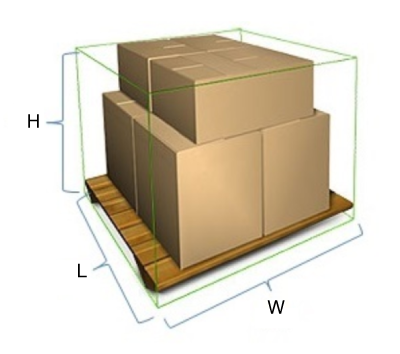NMFTA Freight Classification Changes Effective July 19, 2025
The National Motor Freight Traffic Association (NMFTA) announces major changes to the National Motor Freight Classification (NMFC) system, effective July 19, 2025.
The changes announced by the National Motor Freight Traffic Association (NMFTA), effective July 19, 2025, shift the freight classification system from a commodity-based approach to a density-based approach. This means that the LTL freight charges for a shipment will be determined by the weight and dimensions of the shipment, rather than the specific characteristics of the commodities it contains.

The Impact to Subscribers of LTL Freight Quote Products
Eniture Technology publishes products that provide LTL freight quotes during the e-commerce checkout process for the following e-commerce platforms:
- BigCommerce
- Magento
- Shopify
- WooCommerce
Historically, shippers have been able to utilize the traditional commodity-specific freight classification system. Only about five percent of shippers were subject to a pricing tariff that specified that rating would be performed using the weight and dimensions of the shipment. For quoting purposes, the traditional system is simple and highly efficient because it doesn't require the shipper to "build" the shipment before getting an accurate shipping quote.
The change announced by the NMFTA will require that the shipment weight and dimensions be known to obtain an accurate shipping quote for LTL freight. In other words, the shipment must be "built" before it's possible to get an accurate shipping quote. This new requirement is addressed by Eniture Technology's "pallet packing" algorithm.
- BigCommerce - Available as an "add-on" feature. Using the app's navigation menu, navigate to Shipping Providers. Scroll to the bottom of the page and click the Enable button on the Pallet Packing tile.
- Magento - Not available at this time.
- Shopify - Available in all Shopify apps from Eniture Technology, which provides LTL freight quotes. Use the app's navigation menu to navigate to "Pallets".
- WooCommerce - Available as an "add-on" plugin using this link: https://eniture.com/woocommerce-pallet-packaging/
Charges Associated with the Pallet Packing Algorithm
Use of the pallet packing algorithm will result in additional charges. The method of billing charges depends on the e-commerce platform. Each packaging solution is billed accordingly:
BigCommerce & WooCommerce
For BigCommerce or WooCommerce, select a plan that most closely represents your needs. If you exceed the number of lookups within a month, the plan will automatically renew before the end of the billing cycle.
100 lookups per month - $5.00 (5 cents each)
250 lookups per month - $10.00 (4 cents each)
500 lookups per month - $15.00 (3 cents each)
1,000 lookups per month - $20.00 (2 cents each)
2,500 lookups per month - $25.00 (1 cent each)
Shopify
For Shopify, use of the pallet packing algorithm results in a flat, 3 cent usage charge for each packing solution.
Will I Be Impacted By This Change by the NMFTA?
Your LTL freight provider is the best party to answer this question.
If the change announced by the NMFTA impacts your LTL freight account, it's unclear how each LTL freight provider will respond to API quote requests generated using the "old" commodity-based freight classification system. Any of the following may occur:
- The freight provider may continue to provide accurate quotes using the commodity-specific freight classification system (at least for a period of time).
- The freight provider may provide inaccurate quotes, which can only be resolved by implementing the "pallet packing" algorithm previously described.
- The freight provider may return an error, which will likely manifest as a message to your website visitor, such as "We don't ship to your address" or a similar message.
What To Do If You're Impacted By the NMFTA Change...
The data requirements to accommodate the change announced by the NMFTA are very different than those for the commodity-specific freight classification system. In addition to identifying a freight class and weight for each item in your product catalog, you will need to:
- Follow the instructions in the relevant User Guide to identify the sizes and capabilities of the pallets you stock for shipping purposes.
- Enter dimensions for each item in your product catalog that may be included on an LTL freight shipment.
- Identify, for the benefit of the packaging algorithm, the packing characteristics of each item in your product catalog (e.g., allow the item to be rotated for placement on a pallet). Refer to the Product Settings section in the User's Guide for instructions on these settings.
Follow the instructions in the relevant User's Guide to complete the setup of the pallet packing algorithm.